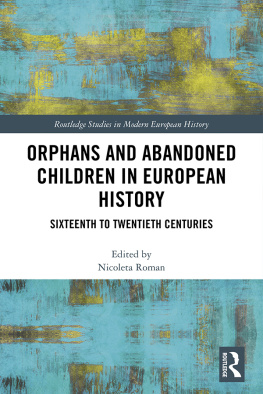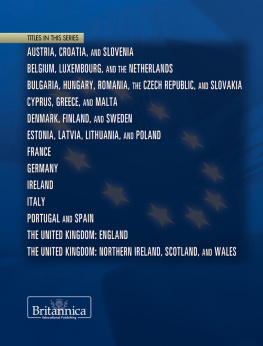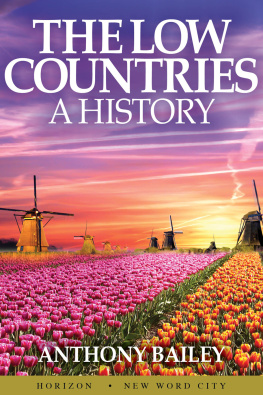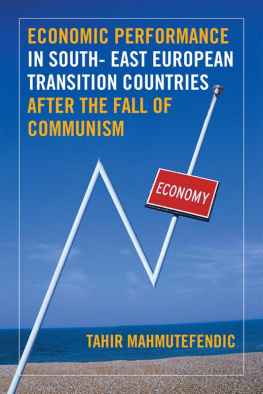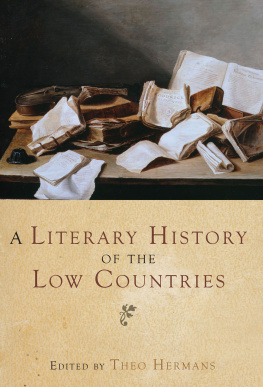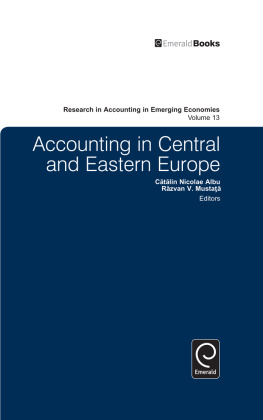HISTORY OF THE LOW COUNTRIES
History of the Low Countries
edited by
J.C.H. Blom, E. Lamberts
translated by
James C. Kennedy

First published in 1999 by
Berghahn Books
New Edition in 2006
2006, 2009, 2011 J.C.H. Blom, E. Lamberts
Reprinted in 2009, 2011
All rights reserved.
No part of this publication may be reproduced in any form or by any means without the written permission of Berghahn Books.
Library of Congress Cataloging-in-Publication Data
Geschiedenis van de Nederlanden. English.
History of the Low Countries / J.C.H. Blom and E. Lamberts, eds. translated by James C. Kennedy.
p. cm.
Includes bibliographical references and index.
ISBN 1-84545-272-0 (pbk. : alk. paper)
1. Netherlands--History. 2. Belgium--History. I. Blom. J. C. H., 1943- . II. Lamberts, Emiel.
A complete catalog record for this book is available from the Library of Congress.
British Library Cataloguing in Publication Data
A catalogue record for this book is available from the British Library.
Printed in the United States on acid-free paper.
This publication has been made possible with financial assistance from the Prins Bernhard Foundation, the Louis Lamberts van Assche Foundation, and the M.A.O.C. Gravin van Bylandt Stichting.
Contents
L.J.R. MILIS
L.J.R. MILIS
W.P. BLOCKMANS
A.T. VAN DEURSEN
P. JANSSENS
J. ROEGIERS AND N.C.F. VAN SAS
E. LAMBERTS
J.C.H. BLOM
J.C.H. BLOM AND E. LAMBERTS
Translators Note
This translated text is a slightly amended version of the Geschiedenis van de Nederlanden. In some chapters, paragraphs have been redrawn, and, in a few instances, shortened or amplified for clarity. Keeping these minor changes in mind, the reader of the History of the Low Countries may have every confidence that the content and style of each author has been preserved.
One note about the spelling of proper nouns: Dutch and Flemish names and places have been kept in the original wherever possible, in line with current sensibilities on this matter. I have, for example, used Nijmegen rather than Nimwegen (traditionally used by German and English speakers). Flemish-speaking towns, once known to Anglophones by their French names, are noted here by their Dutch names (e.g., Kortrijk instead of Courtrai). The same rule applies to the River Maas (not Meuse). Only in the cases of two famous towns (Bruges and Ypres) have I chosen to retain the French variant, since this is how they are best known to Anglophones.
I also have elected to use specific English variants (Brussels and The Hague, for instance) in all cases where these are still commonly in use among English speakers. In those instances where towns were once well-known to Anglophones by their own spelling, but no longer are, I have reverted to present-day spellings (Douai and Tournai, instead of Douay and Tournay). Finally, it is important to note that medieval historians sometimes use geographical terms different from modern historians. For this reason, Friesland replaces Frisia after , just as Gelderland (the province) replaces Guelders (the duchy). Wherever confusion might ensue, I have provided alternate spellings in parentheses where the name is first encountered.
Finally, there is the problem of the Low Countries. Is the term plural or is it singular? Nederlanden is plural in Dutch, and given that the region has often been divided politically and culturally, it seems appropriate that the plural be used in most cases. Still, part of the ambition of this book is to treat the region as a whole, to see unity in diversity, and when the Low Countries is treated by an author as a single entity, I have opted to translate the term in the singular.
James C. Kennedy
Preface
This book sketches the history of Europes Low Countries, present-day Belgium and the Netherlands. There is more than sufficient reason to put the regions history into a single narrative. It is true that the Low Countries possessed clearly delineated boundaries only after 1500, and that they constituted a single political unit for but short periods of time. Still, in many respects they demonstrated common traits and underwent similar developments that differentiated them from surrounding countries. The social and economic similarities evident throughout most of the region stem from the High Middle Ages, when the Scheldt, Maas, and Rhine delta area became an important center of trade. Next to Northern Italy, the Low Countries became the most urbanized and prosperous region in Europe. Its political system exhibited, from relatively early on, a degree of representative government that differed from the more feudal arrangements then existent in much of Europe. Internationally, the region served both as a mediator for and a buffer to the surrounding great powers, France, England, and Germany. The Low Countries also fulfilled a similar role in cultural life. Overwhelmingly bourgeois in character, its culture was characterized by a determination to control nature and a commitment to the visual arts, its most striking artistic legacy. A single language, Dutch, linked people across political boundaries, enhancing cultural points of contact across the region. In recent decades, Belgium and the Netherlands have become increasingly involved in the broader process of European integration, in which they often share the same interest and follow parallel policies. A single history of the Low Countries helps reveal these parallels and similarities, even while retaining an eye for the equally important differences.
An extensive historiography of the Low Countries common past already exists in Dutch, most impressively, perhaps, in two extensive, multi-volumed histories, entitled the Algemene Geschiedenis der Nederlanden. They never found a broad public, however, and, because of the language, they remained closed to most foreigners. This book is designed to correct this inconvenience. The authors, all of them experts in their own fields, have presented the latest historical research in both a comprehensive and abbreviated form, appropriate for university students and a wider, interested, international public.
Each of the books eight chronologically based chapters, then, has been written by a different author, and the chapters show clear differences in approach, interpretation, and style. Any disadvantage in this approach is outweighed by the advantage of the great expertise each author brings to his subject. Indeed, it made eminent sense to give the authors a high measure of freedom in writing their chapters, so that their expertise could be maximally utilized. At the same time, the editors and the translator have attempted to streamline the book, both in content and style.
Political developments receive the most attention in this survey. In defense of this approach, we cite the great Dutch historian Johan Huizinga, who wrote to the budding historian Jan Romein in 1925: I often sigh: Doesnt the wider public actually learn the history of civilization best through a well-structured political history? Economic developments, too, receive much space. The connection between politics and economics leads to an examination of social relations and cultural developments, in which religion almost invariably played a large role.
In all of this, the editors hope that they have succeeded in creating a clear and highly readable survey. An epilogue, dealing with unity and diversity of the Low Countries, has been supplied to provide the reader with a short overview of major historical developments.
Next page


